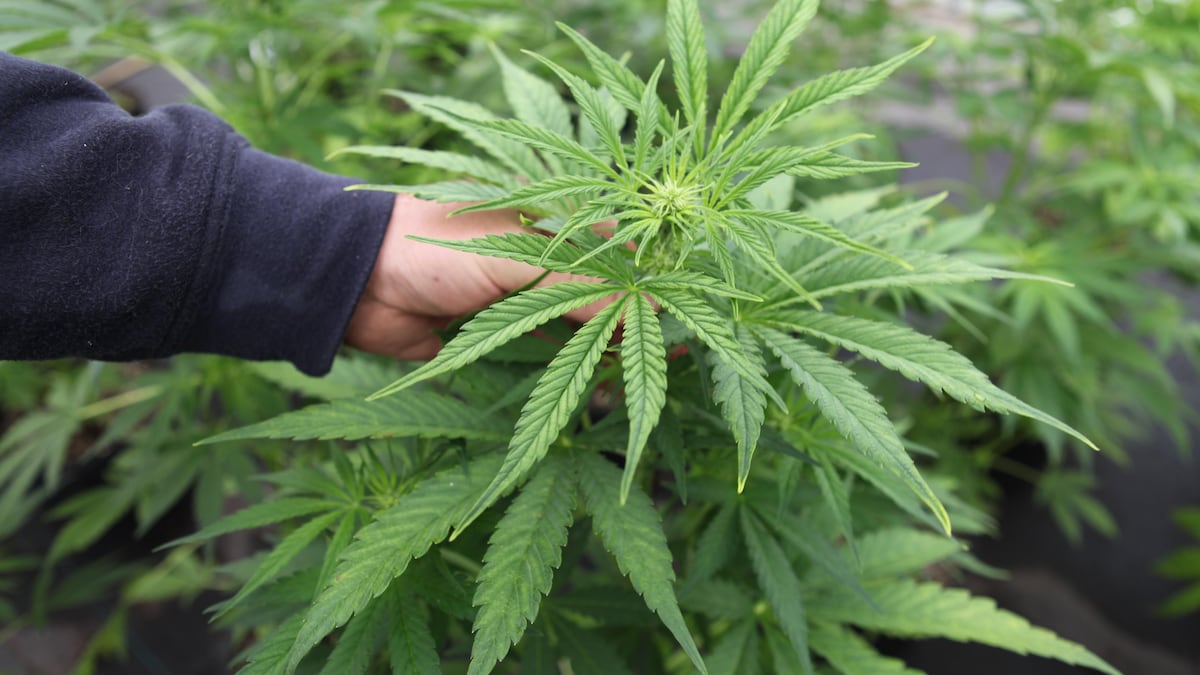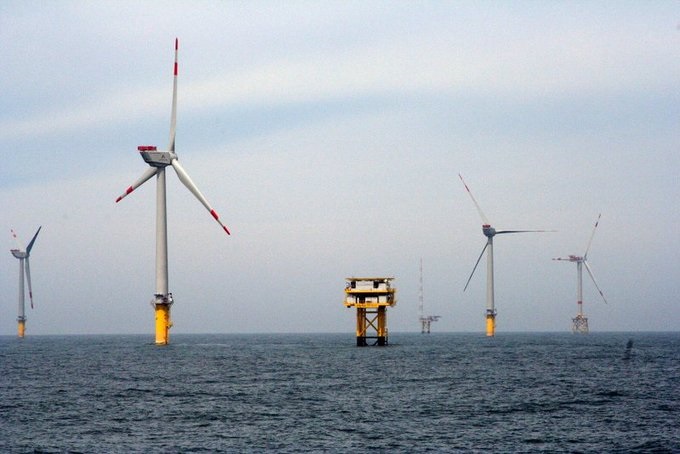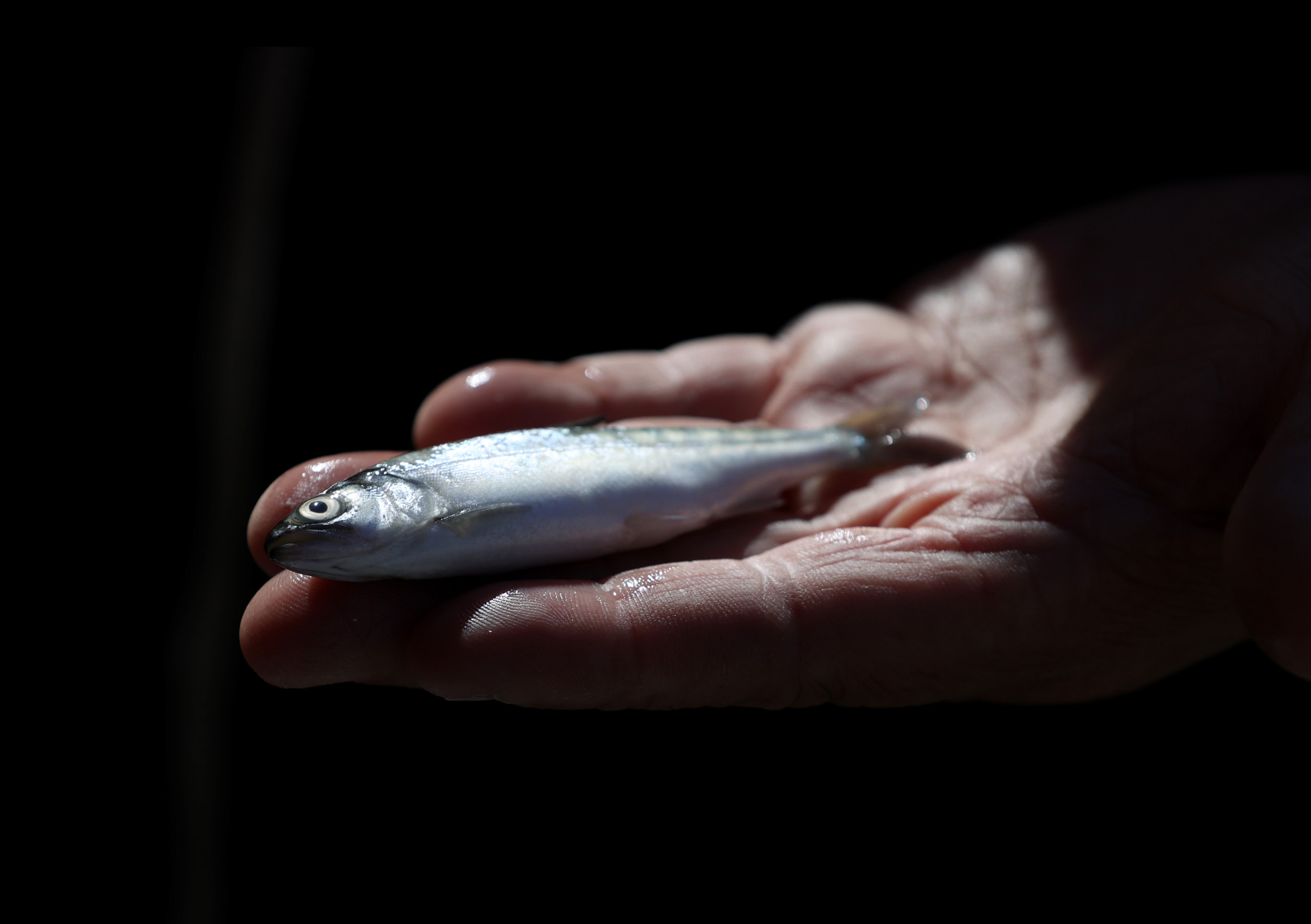Uncommon Knowledge
Newsweek is committed to challenging conventional wisdom and finding connections in the search for common ground.

Wooden Shoe Tulip Festival highlights spring events near Salem
The Wooden Shoe Tulip Festival and cherry blossoms at the Oregon State Capitol highlight spring events around Salem and the Willamette Valley.
CORVALLIS — Oregon State leaned on timely hitting and another stellar performance from its starting pitcher to stay atop the Pac-12 standings.
The No. 5 Beavers topped Stanford, 3-1, at Goss Stadium Saturday evening and secured a series win in the process.
Had they lost, the Beavers (29-4, 10-3 Pac-12) would have fallen behind No. 17 Oregon (25-9, 10-4) in the conference standings as the Ducks beat USC, 5-3, in Eugene earlier in the day. But junior catcher Wilson Weber extended his recent hot streak and provided the go-ahead knock in the fifth inning, and the Beavers never looked back from there.
“Two consecutive days of high-quality pitching and defense,” Oregon State head coach Mitch Canham said. “Controlled the heck out of the (strike zone); 12 (Stanford) walks, and we only had two there. Great grit. … Impressed by how we carried over from yesterday and how the guys went about it again today. Today was a great momentum-builder.”
Oregon State starter Jacob Kmatz, who tossed a complete game against Arizona State last weekend, produced another quality start on Saturday. The junior righty held Stanford to one earned run on six hits while striking out six in 6.0 innings of work.
Dallas Macias provided the Beavers with an insurance run when, for the second day in a row, he launched a home run that cleared that right field bleachers.
“I think it’s definitely a byproduct of putting in work with the swing,” Macias said of what has been clicking for him lately. “The guys around the team: (Travis Bazzana), (assistant coach Ryan Gipson); I went to Driveline, too, over the winter, which helped out a lot with different things. I’m also just making better swing decisions, getting the right pitch and squaring it up better.”
Stanford third baseman Jimmy Nati ambushed Kmatz for a solo homer in the top of the second to open the scoring and give the Cardinal an early advantage.
One inning later, Kmatz briefly lost command and surrendered a one-out walk to Stanford No. 9 hitter Ethan Hott, and then a single to leadoff man Owen Cobb. Cort MacDonald followed with a hard-hit single to right field, and Hott attempted to score from second.
But Beavers’ right-fielder Gavin Turley delivered an outstanding throw home to gun down Hott for the second out of the inning.
“I gave (Turley) a big hug there in the dugout,” Kmatz said. “I had to. That was pretty cool. Defense has just been on lock right now.”
The danger wasn’t over for Oregon State at that point, though. Stanford catcher Malcolm Moore, who is widely considered to be one of the top Major League Baseball Draft prospects in the nation, stepped to the plate with two outs and runners in the corners.
Moore ran up a full count against Kmatz. But the Beavers’ hurler struck him out looking with a fastball to end the inning and escape the jam.
“The goal is to get him out soft and away,” Kmatz said of his battle with Moore. “It’s pitch after pitch after pitch after pitch, and then you see a window (inside) late in the at-bat and get him leaning over the plate a little bit. So, just throwing my best heater on the inner half right there and letting it play up like it can and giving myself and the team the best chance of succeeding in that situation. Because getting that out right there was a pivotal moment.”
Meanwhile, Stanford freshman lefty Christian Lim stymied the Oregon State bats, allowing just two hits and four walks throughout his first 4.0 innings. Oregon State’s bats came to life in the bottom of the fifth, though, when Bazzana scorched a leadoff double to right-center, and then moved to second when Turley followed with a walk.
Lim bounced back and struck out Mason Guerra and Brady Kasper — the Beavers’ No. 3 and No. 4 hitters — in succession. The Cardinal then turned to hard-throwing righty Joey Volchko with hopes of escaping the inning unscathed.
But Weber greeted Volchko with a two-run single to right to ultimately serve as the go-ahead hit.
Midway through the seventh, Canham turned the game over to closer Bridger Holmes. The standout junior tossed 2 1/3 innings scoreless innings and struck out four to slam the door on the Cardinal.
In 20.0 innings this season, Holmes has struck out 27 batters, surrendered just eight hits, and has yet to allow a run.
The Beavers take on the Cardinal in Game 3 of the series at noon on Sunday. The game will be broadcast on Pac-12 Networks.
Jarrid Denney is the high school sports reporter for the Statesman Journal. He can be reached at JDenney@salem.gannett.com or on X @jarrid_denney


The Biden administration is moving to reclassify cannabis as a Schedule III drug, which would remove the plant from the “most dangerous” list and recognize that it has medical uses.
The Biden administration is working towards reclassifying cannabis as a Schedule III drug. If this is successful, cannabis will no longer be considered as one of the “most dangerous” drugs, and its medical benefits will be recognized.
Kristian Foden-Vencil / OPB
Portland attorney Amy Margolis sees the move as a way to get much-needed research on cannabis, but it could also pave the way for big pharmaceutical companies to get involved in the established industry in Oregon.

Amy Margolis is a Portland attorney specializing in cannabis law and policy.
Courtesy Amy Margolis
“They’re the ones who will be legally operating if they follow the final rules produced by the FDA and the standard FDA approval and sales process for pharmaceuticals,” Margolis says. “It certainly injects a concern that now we have real big pharmaceutical interests involved in the cannabis market.”
Margolis runs Margolis Legal, a Portland law firm that works with clients in the cannabis industry. She says this proposal doesn’t do what many in the industry have been advocating for; removal of cannabis from the schedule of illegal drugs entirely.
“I think it’s a remnant of the drug war, ” she says. “I think it’s kind of outdated perspectives on cannabis being a hard drug.”
Margolis spoke with OPB “All Things Considered” host Geoff Norcross:
Geoff Norcross: Basically speaking, the Biden administration is saying they want to officially recognize that cannabis is not as dangerous as the most dangerous drugs. Isn’t that a good thing?
Amy Margolis: Theoretically, that’s a good thing. We’ve long known that cannabis is not dangerous, should be treated like alcohol, which this does not do. But in theory, yes, that’s a good thing. How it impacts the market? We’re not so sure.
Norcross: Okay, what could happen?
Margolis: So what this did is it sent over the reclassification recommendation to the FDA to essentially rule make around it. And from my perspective, and I think the perspective of many of my peers, this simply opened up a pathway for pharmaceutical companies to get involved in the cannabis industry, whether through the development and sales of pharmaceutical cannabis or through the research component.
Norcross: And what would that mean for the local market, which doesn’t have a lot of big players like the pharmaceutical industry in it?
Margolis: Other than the DOJ, there was not too much outside interests who might care if prosecutions were happening, who might care if statewide industry is developing. I think the risk for Oregon — and this is sort of a worst-case scenario — is that pharmaceutical companies can now get involved. They’re the ones who will be legally operating if they follow the final rules produced by the FDA and the standard FDA approval and sales process for pharmaceuticals. Now you have a player beyond just the Department of Justice who could have some interest in owning that market. It certainly injects a concern that now we have real big pharmaceutical interests involved in the cannabis market. And they’re the only ones who can lawfully operate.
Norcross: One of the big problems for the cannabis industry here has been the lack of banking services or tax breaks that other businesses get. Would this move by the federal government this week change any of that?
Margolis: I think it remains to be seen. You know, the banking industry will look at this, federal regulators will look at this, and try and decide if this clears up the legality around the state licensed recreational and medical markets. And I do not believe this move by the Biden administration does that. I don’t believe it legalizes on a federal level what is currently happening in this state. And that is, aside from federal legislation, the path forward to safe banking.
Norcross: You touched on this a little bit earlier, that what the federal government could have done was to treat cannabis like it’s alcohol, and let an entirely different federal agency, the ATF, oversee its use and the regulations around it. I’m wondering if the Biden administration may have missed an opportunity to go all the way and just take it off the schedule of drugs entirely.
Margolis: I think “missed an opportunity” is how the industry will view it. I mean, the industry in Oregon and across the country has been advocating for cannabis to be declassified and not reclassified. And I think the Biden administration knows that and instead chose to go this direction. I think it’s a remnant of the drug war and I think it’s kind of outdated perspectives on cannabis being a hard drug. We’ll see if this is maybe the first step, but I’m concerned that, for the federal government, first steps can last a long time.
Norcross: Do you see any upside for the industry here in Oregon, if cannabis is reclassified in this way?
Margolis: I do think the upside is, you know, we have in the industry been talking about research and cannabis for a long time. And this does open the door to that, which I think will be a positive, even if it’s only a financial benefit to those in the pharmaceutical industry.
Click on the audio player above to hear the whole conversation.

The US Department of the Interior has announced two proposals for offshore wind energy auctions off the coast of Oregon and in the Gulf of Maine.
The two sales proposed by the Bureau of Ocean Energy Management (BOEM) will have the potential to generate more than 18GW of offshore wind energy, enough to power more than 6m homes.
The first-ever offshore wind energy auction in the Gulf of Maine Wind Energy Area would include eight lease areas offshore Maine, Massachusetts, and New Hampshire, totalling nearly 4,046 sq km which have the potential to generate approximately 15GW of renewable energy and power more than 5m homes.
BOEM is proposing to conduct simultaneous auctions for each of the eight lease areas using multiple-factor bidding. The Bureau is also seeking comments on providing bidding credits to bidders that commit to supporting workforce training programs or supply chain development, or a combination of both, as well as a credit for a fisheries compensatory mitigation fund.
The proposed lease sale in Oregon includes two lease areas totalling 789 sq km — one in the Coos Bay Wind Energy Area and the other in the Brookings Wind Energy Area.
During the Biden administration, the Department of Interior held four offshore wind lease auctions, including sales in the New York – New Jersey region, offshore the Carolinas, and the first-ever sales offshore the Pacific and Gulf of Mexico coasts.
Last week, the Interior announced a new five-year offshore wind lease schedule, which includes up to 12 potential offshore wind energy lease sales through 2029. Future offshore wind energy lease sales from BOEM are anticipated in the Atlantic, Gulf of Mexico, Pacific, and the waters offshore of the U.S. territories in the next five years.

An Oregon man is facing multiple charges after he dumped bleach into a tank at a Douglas County hatchery, killing roughly 18,000 young Chinook salmon, according to state and local authorities.
In a statement announcing the arrest of Joshua Heckathorn, 20, of Gardiner, the Oregon Department of Fish and Wildlife (ODFW) called the poisoning of thousands of fish that are a protected species, a “significant poaching incident.” The fish were killed at a volunteer-run hatchery.
The investigation began on April 22 when Douglas County Sheriff’s Office (DCSO) deputies responded to a call that someone “forcibly made entry into the hatchery building” and poured a chemical substance into one of the rearing ponds causing the death of thousands of pre-smolt Chinook salmon, ODFW said.
The following day, around 6:30 p.m., a DCSO deputy patrolling the area spotted a man in the hatchery and “behind the locked gate and no trespassing signs.” The man, identified as Heckathorn, authorities said, was questioned at the scene and “admitted to trespassing on the property and entering a storage location and handling the chemical bottle.”
Heckathorn was arrested and booked into the Douglas County jail on charges of burglary, criminal trespass and criminal mischief. Authorities say poaching charges are expected to be added.
Justin Sullivan/Getty
Newsweek reached out via email on Tuesday night to DCSO for comment. It was unclear at the time of publication whether Heckathorn had retained an attorney who could speak on his behalf.
Due to the high number of salmon killed, DCSO is working the case with the Oregon State Police (OSP) Fish and Wildlife Division to “address both vandalism on the property and a significant poaching incident,” OSP Sergeant Levi Harris said in a statement.
“Poaching charges will include Unlawful Taking Chinook Salmon for 17,890 fish, which raised the charge to a Class C felony,” Harris said. “In addition, Heckathorn faces charges of Making a Toxic Substance Available to Wildlife, which is a Class A Misdemeanor; and Criminal Mischief 1st Degree (Damaging or destroying property of another in an amount exceeding $1,000). Additional penalties could include a lifetime angling license suspension and damage suits for unlawful killing of wildlife.”
The maximum civil penalty in the state for illegally taking or killing a single Chinook salmon is a $750 fine.
“Courts have the authority to multiply that amount by the number of fish taken, with a judgment in this case potentially raising the amount to over $13 million,” Harris said, adding that while the fines are unlikely to rise to that level, the incident is a significant loss for the Gardiner Reedsport Winchester Bay Salmon Trout Enhancement Program (STEP).
“The killing of these fish is a real blow to the STEP Program volunteers, ODFW, fishermen, and the community as a whole,” Harris said. “In my 25 years as a game warden, this is one of the most senseless acts I have seen.”

Oregon Department of Fish and Wildlife
Newsweek reached out via email to the OSP and representatives for the Gardiner Reedsport Winchester Bay STEP program for comment.
The Gardiner Reedsport Winchester Bay STEP hatchery is run by volunteers who raise and care for nearly 200,000 fish each year before releasing them into the Umpqua River estuary, according to the group’s website. The poisoned salmon were set to be released in June as part of a state program that the Oregon legislature established in 1981 to help “rehabilitate and improve stream habitat and natural fish stocks.”
President of the STEP program Deborah Yates said the volunteers at the hatchery are still trying to come to terms with what happened. She said volunteers have spent hundreds of hours caring for those fish, saying: “It’s an incredible time investment, and they mean a lot to people.”
“You get attached to those fish,” Yates said. “When nature does something, it’s crushing. But it’s nature and it happens. But when someone comes in and does something like this, you can’t wrap your head around it. We have so many hours wrapped up in those fish, to have someone come in so cavalier, and kill them, it doesn’t make sense.”
Newsweek is committed to challenging conventional wisdom and finding connections in the search for common ground.
Newsweek is committed to challenging conventional wisdom and finding connections in the search for common ground.


Video: Dozens of Yale Students Arrested as Campus Protests Spread


Haiti Prime Minister Ariel Henry resigns, transitional council takes power


Larry Webb’s deathbed confession solves 2000 cold case murder of Susan and Natasha Carter, 10, whose remains were found hours after he died


Fetterman hammers 'a–hole' anti-Israel protesters, slams own party for response to Iranian attack: 'Crazy'


Period poverty still a problem within the EU despite tax breaks


US secretly sent long-range ATACMS weapons to Ukraine


First cargo ship passes through new channel since Baltimore bridge collapse


Turkey’s Erdogan meets Iraq PM for talks on water, security and trade